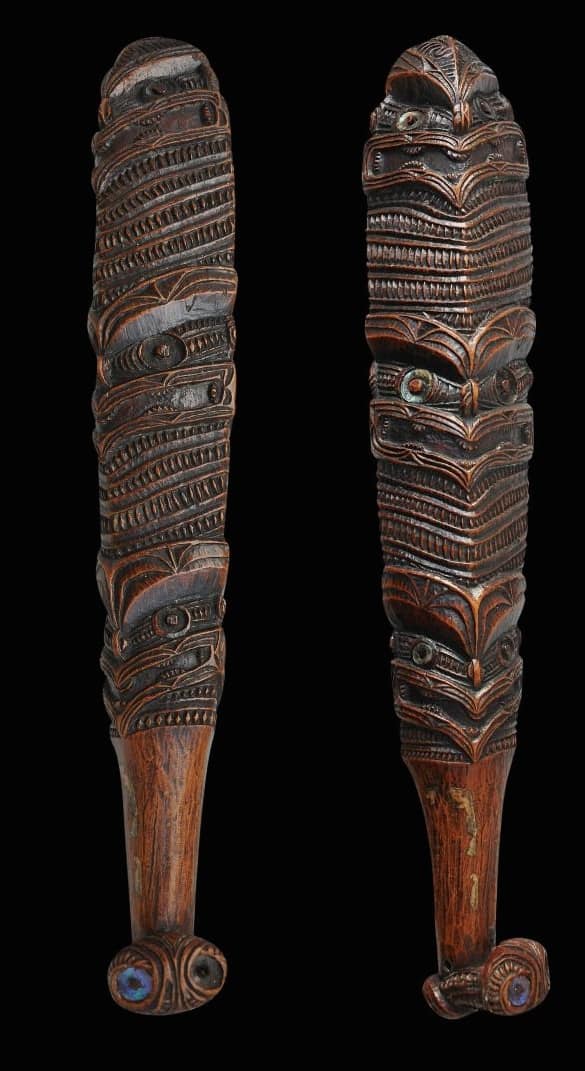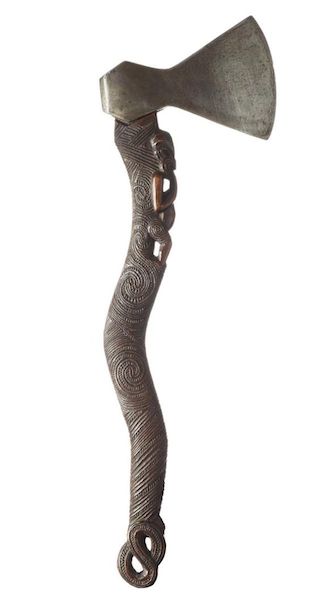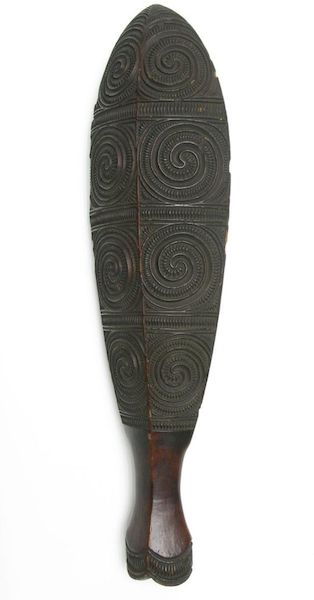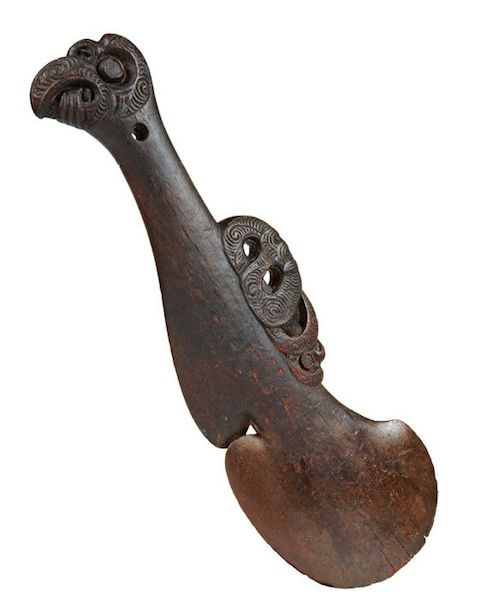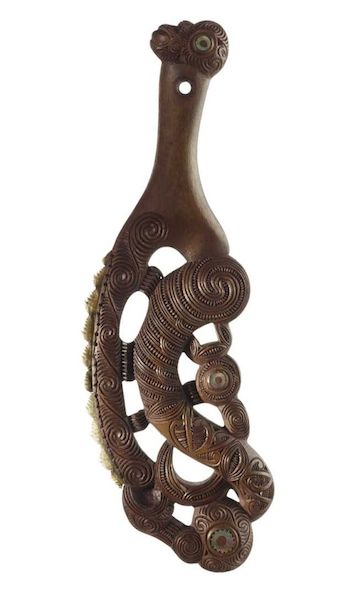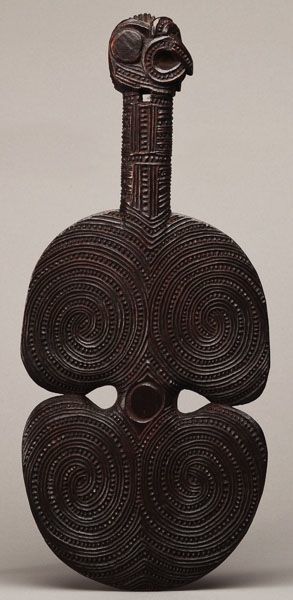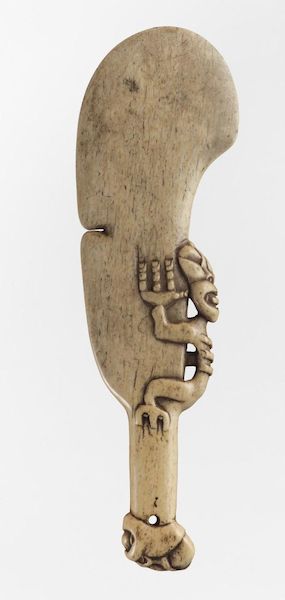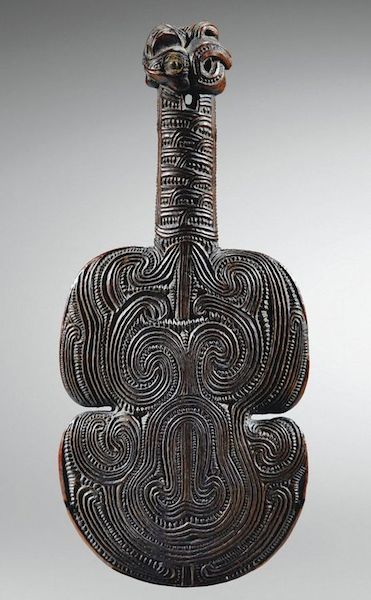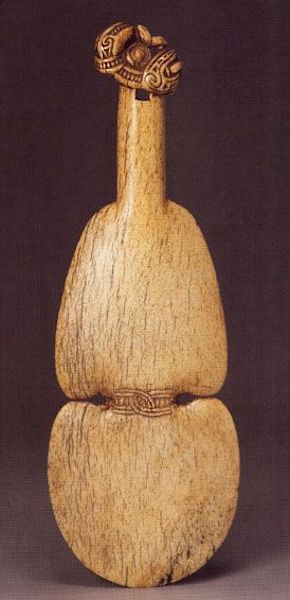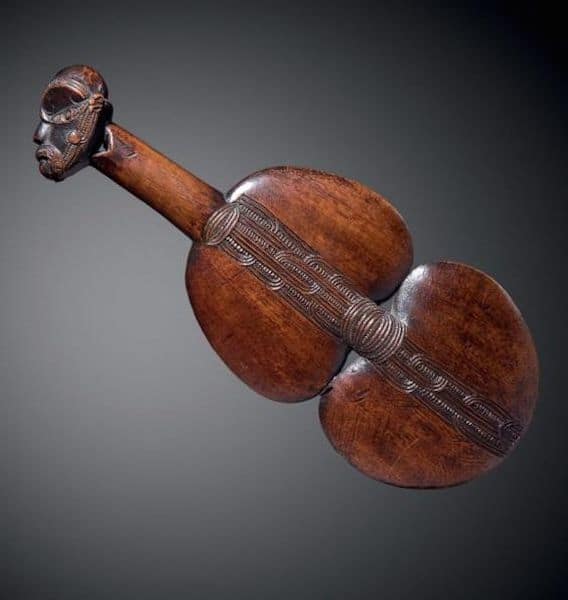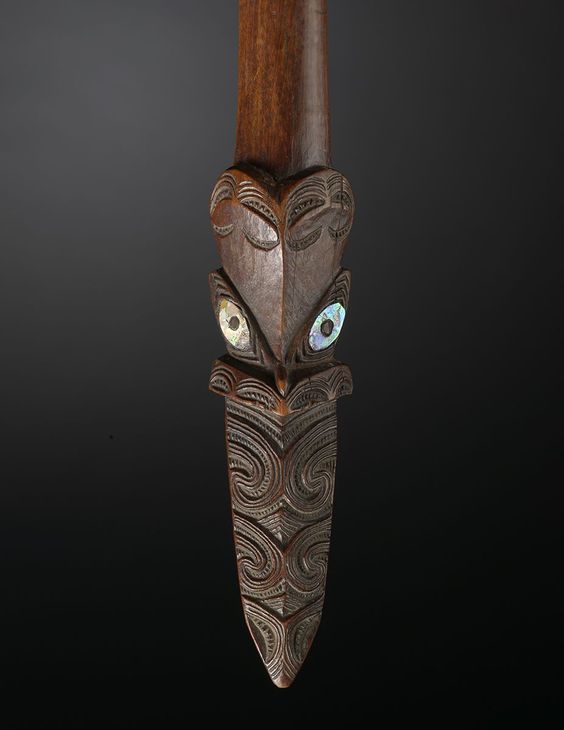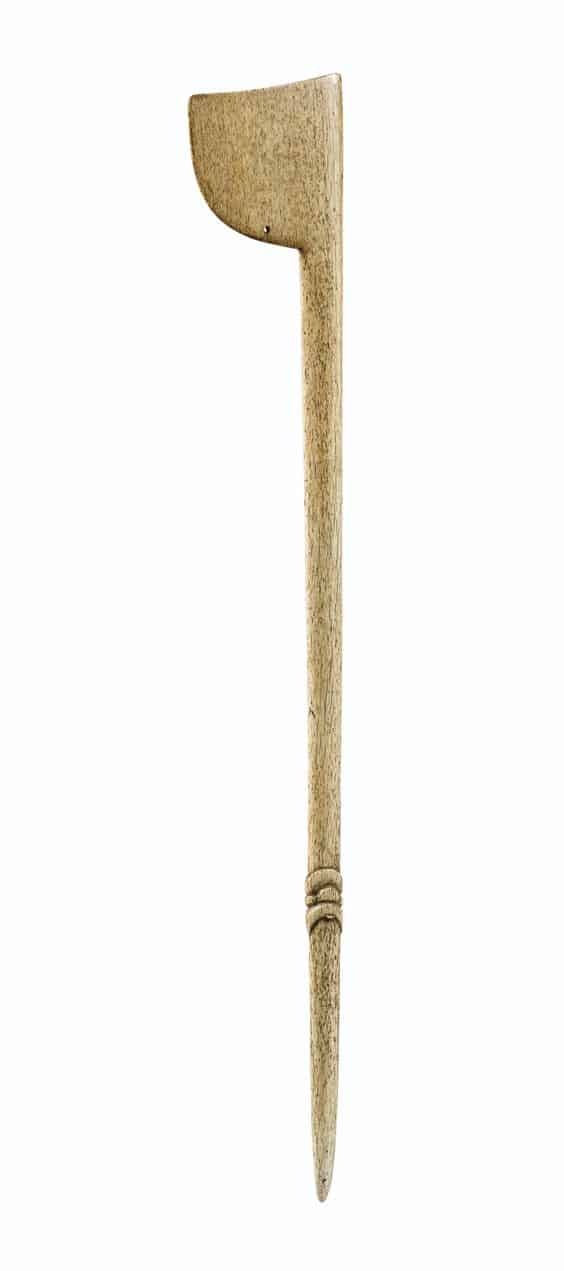Maori Weapons
In many modern-day museums and art galleries, native weapons from the south pacific are often not prominently displayed. It is almost as though Europeans wish to believe they invaded a garden of Eden. This was not so with most Polynesians being as warlike as Europeans just armed with War clubs instead of guns. Maori weapons are divisible into four classes, Hand Clubs, Long clubs, Thrusting weapons and Projectile weapons.
I Buy Maori Weapons and if you want to sell Maori weapon please feel free to contact me and send an image. if you want to know what your Maori weapon or is worth, feel free to contact me. I’m always happy to see new pieces.
Maori weapons are not just ethnographic collectibles. Many are so superbly made as to become art objects.
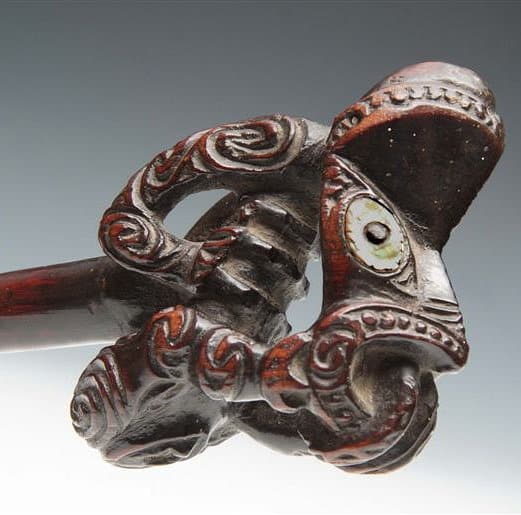
Maori weapons made with such attention to detail are art.
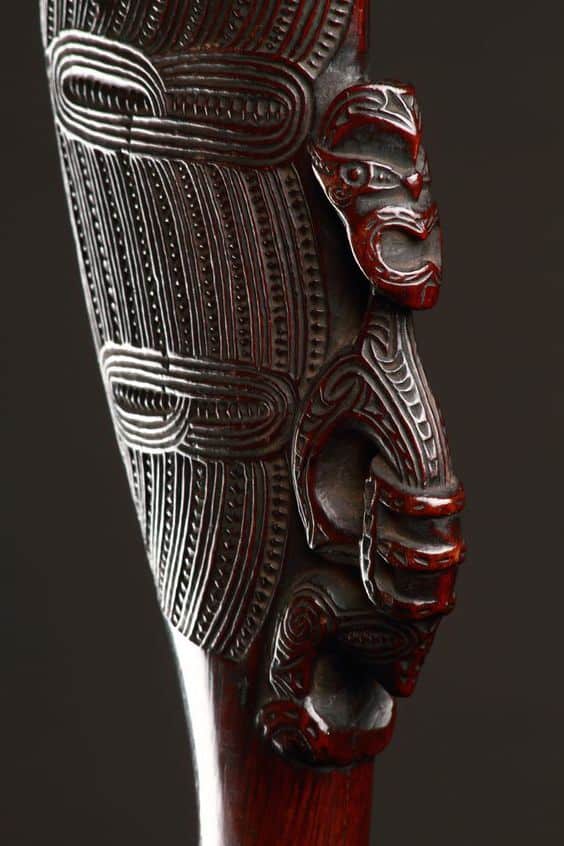
Maori Weapons from New Zealand
“ a defeated party fleeing for their lives, or the ovens filled with the bodies of the slain villagers. A band of slaves hurried along rough trails… Hence his weapon was the Maori’s constant care in the old fighting days, and was always taken with him”. Elsdon Best of Tuhoe-land
The Maori like other Polynesians believed that objects could gain a life of their own. They were capable of absorbing mana and were not just things use to fight but objects with spiritual power. The carvings found on weapons are not decoration they give power to these objects.
There are four broad classes of Maori weapon
Short striking weapons – Hand Clubs
Long Striking weapons-Long clubs.
Thrusting weapons – spears
Projectile weapons
Maori Weapons Short Clubs
Patu
Maori hand clubs (Mere) were one hand weapons. Carried into battle usually stuck in the back of the belt or girdle (tatua). All short hand weapons attached to the wrist by means of a cord of plaited fiber of the harakeke (phormium tenax). They are one of the most easily recognizable native weapons from the south pacific.
Patu have an average length of about thirteen inches. They are a double-edged weapon and made of hard volcanic stone Patu Onewa, greenstone Patu pounamu or the jaw bone of a sperm whale Patu Paraoa. At later times they were even made from iron Patu pora. They were never traditionally made from wood.
Patu Onewa
Making stone Patu with Neolithic tools was hugely time-consuming. Stone Patu was not just a weapon but also a symbol of status.
They are made out of igneous rocks like basalt. They tend to damage quite easily around the edge.
Good examples should have a nice smooth hole and distinctive design on the base.
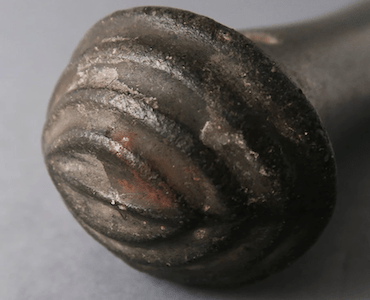
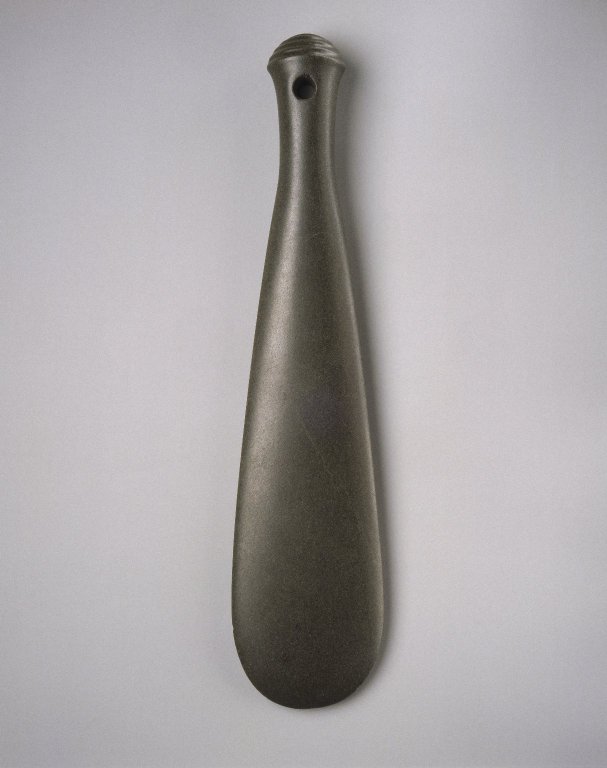
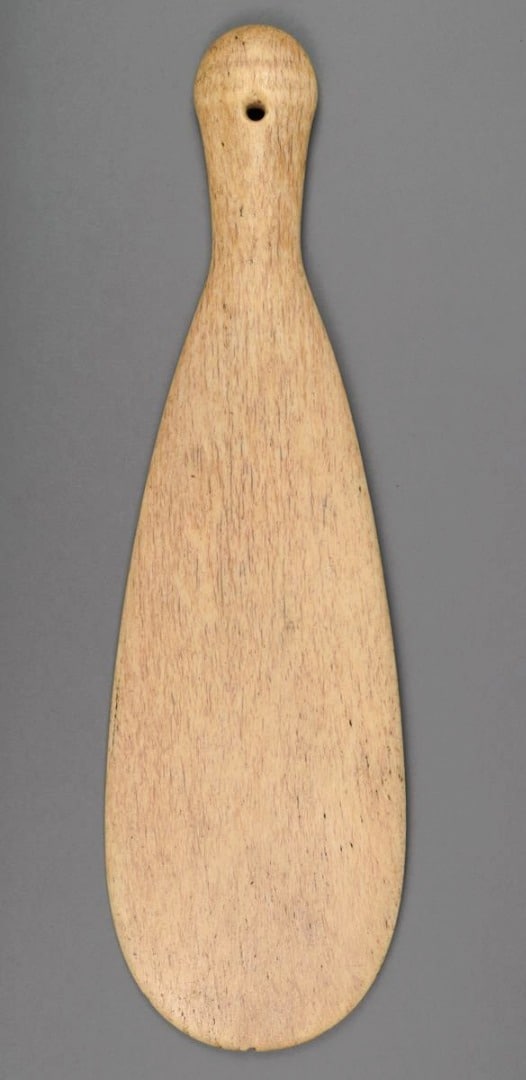
Patu Paraoa
The Patu, made from the bones of the sperm whale, was also highly prized because they were strong, and not liable to fracture. These were, of course, usually made by coast-dwelling tribes.
They have a more functional feel to them. Most have a rounded Promel similar to stone Patu but flatter. Some rare examples have spirit faces on the promel
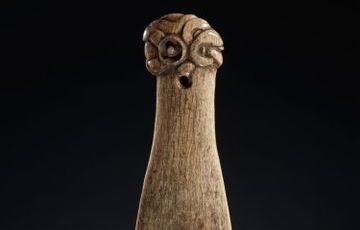
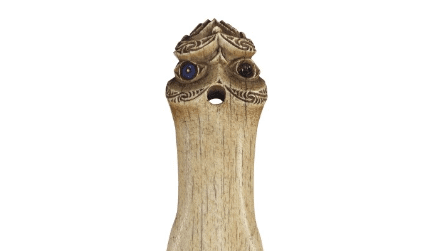
Carved from Whalebone
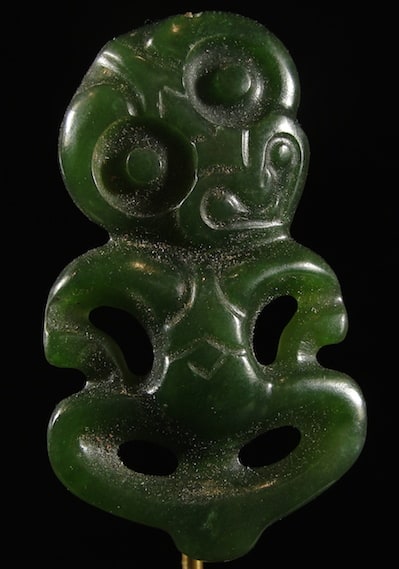
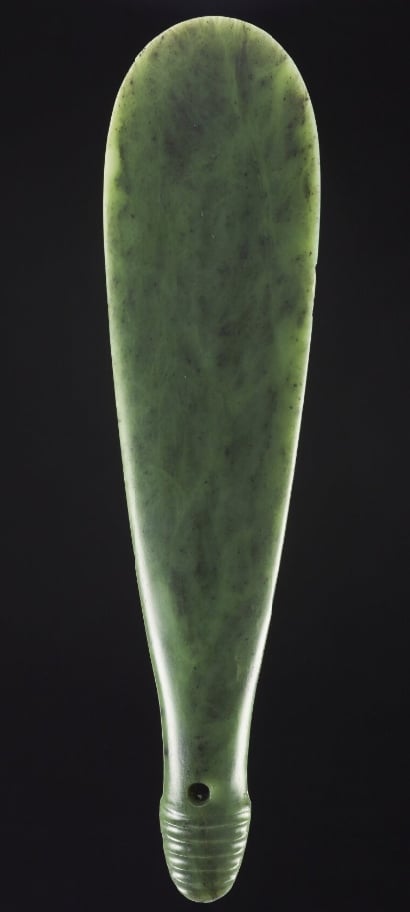
Kotiate
The feature distinguishing Kotiate from other hand clubs is the depressed sinus halfway down each edge of the blade.
These sinuses were to attach feather bundles, which served in fighting to distract the adversary. Kotiate usually has masks as handle terminals just in front of which is a hole for the wrist thong.
They come in wood and bone but not in stone. if you want detailed information about Kotiate and Wahaika they are covered in depth in a separate article
Right: Whalebone Kotiate
27cm – 39.5 cm
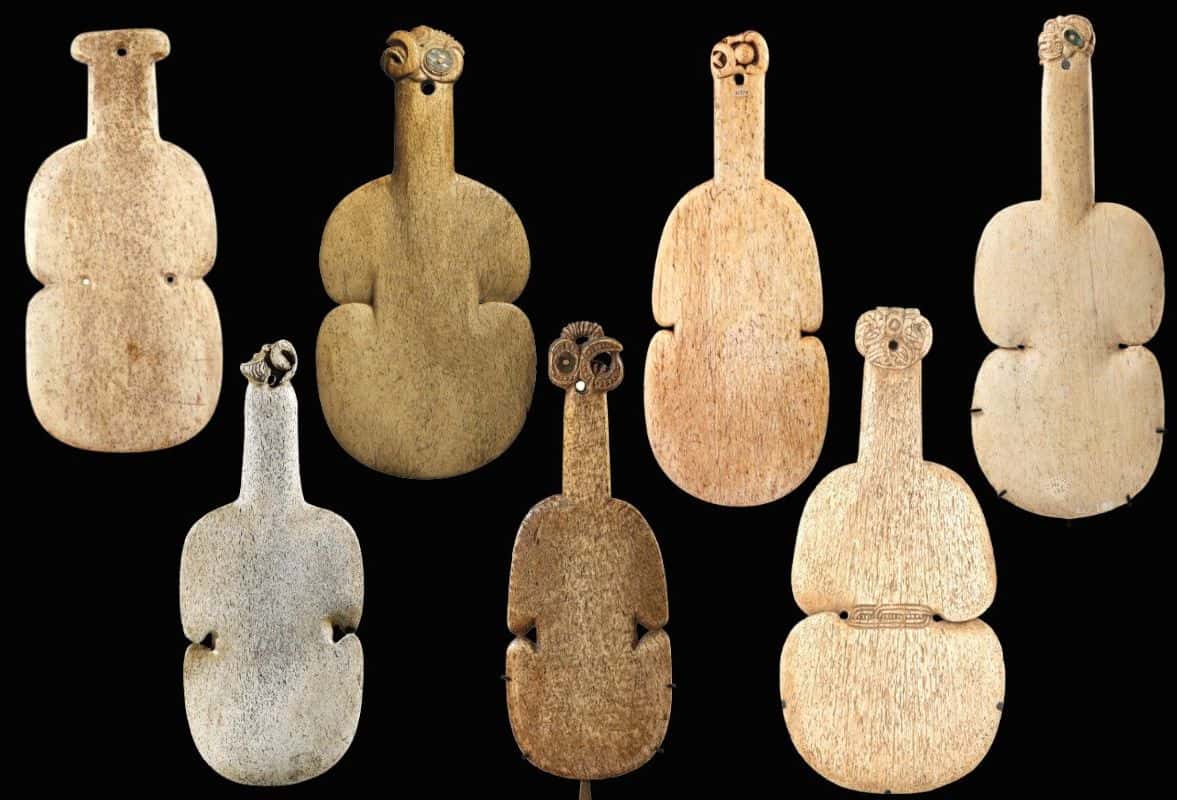
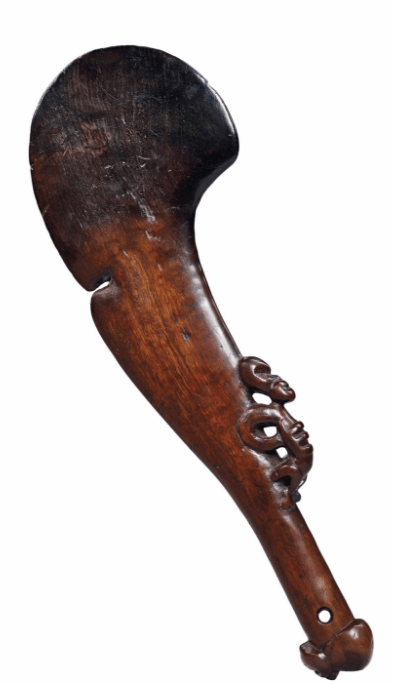
Wahaiki
These hand clubs were from wood or whalebone. The best and oldest ones often have sinuses about halfway down the blade. These sinuses were for feather attachments similar to the Kotiate.
They often have a recumbent Figure, situated forward of the handle, and a mask as the terminal. They have a fairly keen edge and were not made of stone.
Lots of later made for sale Wahaiki also exist. The figures are larger, the carving more extravagant and the wood poorer quality
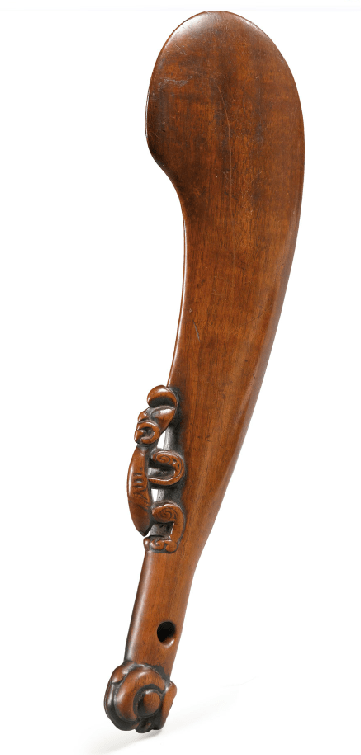
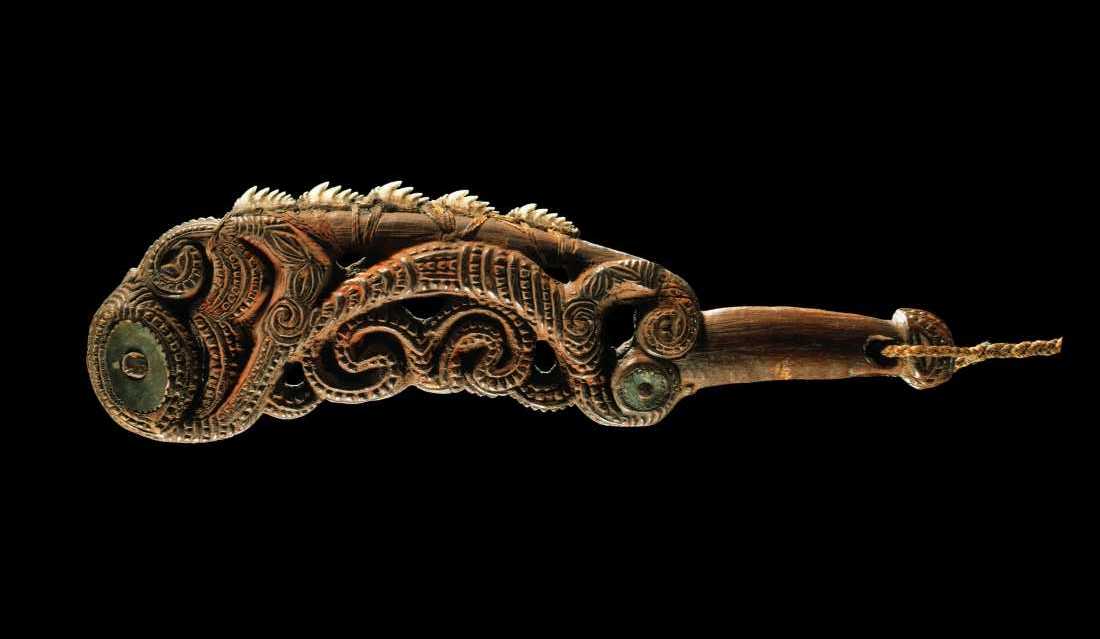
Maori shark-tooth knife
Mata-Kautete are very rare short, saw-like Maori weapons made by fastening sharks’ teeth to a wooden haft.
Mira-Tuatini are similar, but with two jagged shark tooth lined edges.
Patuki Maori Club
A rare short pole like club but quadrangular in section. It has is likely some of these were also flax beaters.

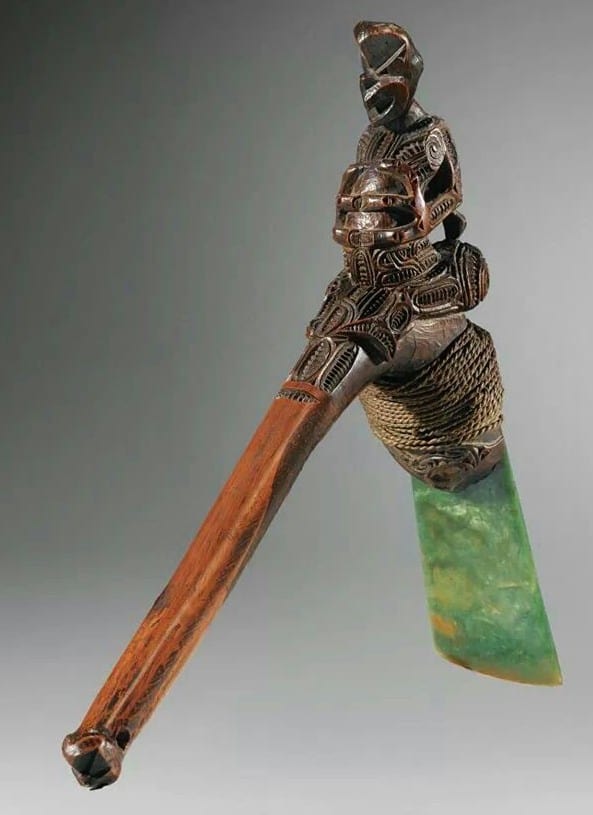
Toki Maori adze
The stone Toki is an adze and were of many sizes. Toki whawhao pu, is usually a small Toki made of greenstone and lashed to a handle highly ornamented with carving. Such Toki were for influential persons and held in the right hand, as a Patu or mere is while delivering a speech. Toki were not only for dressing timber and other domestic works, but also as weapons of war. They were generally used to despatch a foe who has fallen to spear or club.
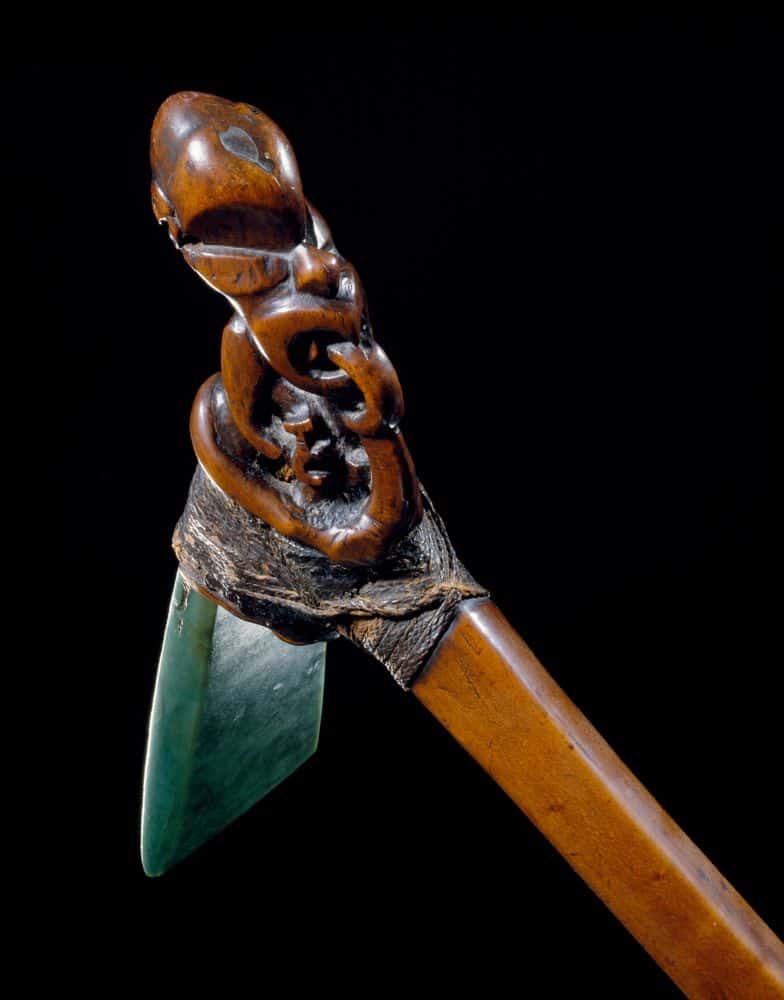
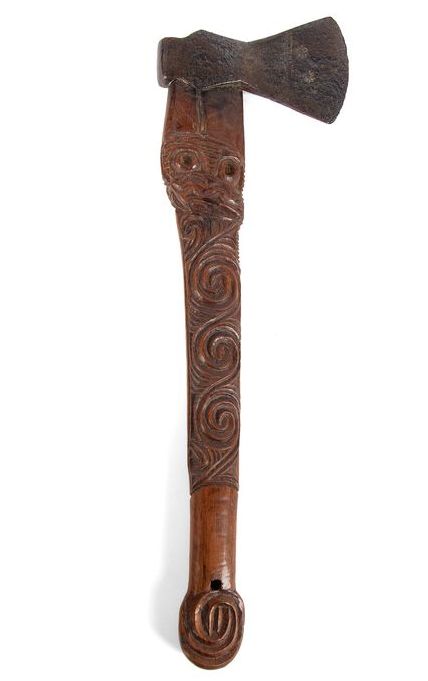
Maori hand axe
In the latter part of the eighteenth century, iron began to become available from the early European voyagers. Iron tomahawks with either a short or long handle were quickly adopted weapons.
The carving on the handles of these axes shows the importance of the weapon. They may be transitional but are collectible.
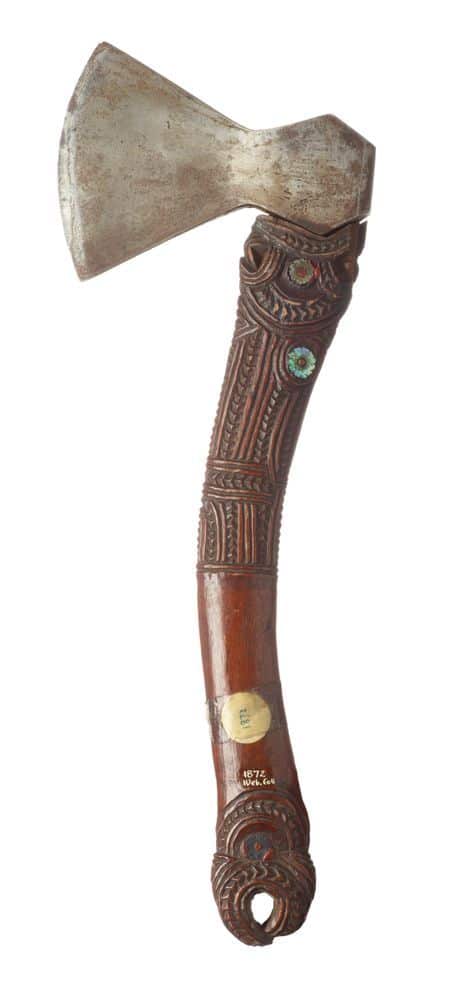
Maori Weapons Long Clubs

Taiaha
This favorite and well-known weapon is also known as Hani and Maipi. In lengt,h it is about five feet. One end is flat and about two-and-a-half inches wide; this is the striking end and is the Rau or blade. The other end carved in the form of a face and tongue, and is Arero (tongue). The end embellished with carving ornamented by fixing thereto a bunch of red feathers (kura) long white dog hair (awe). So adorned this weapon is a Taiaha-kura.
This was a favorite weapon in the old fighting days, and warriors trained until they became remarkably proficient in its use.
When a man armed with a Taiaha wished to take advantage of an enemy, he would advance with his weapon at the trail (to), the blade (rau) at the rear and lowered close to the earth. When near enough to strike, the Rau would be quickly raised and the blow delivered.
Use
The following guards and points were in the use with the Taiaha:
- Popotahi (guard) The weapon held vertically before the body, the tongue end down.
- Whakarehu—the point from the popotahi guard. The lower end of the weapon (i.e., the arero) raised and thrust at the adversary. (Either as a feint or if the point struck the person so much the better, as it would give operator time to recover arms and possibly deliver a blow.)
- Whitiapu—the stroke (not thrust) from the popotahi guard. The blade (rau) of weapon used as a club.
- Huanui—a guard. The taiaha held horizontally before the body, the arero end to left. The point whakarehu and the blow whitiapu were also delivered from the huanui guard.

Arero or carved tongue of a Taiaha
Tewhatewha / Paiaka
A Maori weapons with a round handle about five feet in length, at the end of which is a broad, flat head, something like an axe, and with one edge sharpened. On the head bunches of pigeons’ feathers acted as ornament, the quills removed soften the feathers. This weapon constructed from the root of the maire tree. The trunk wood not being suitable, as in delivering a vigorous blow on a hard-headed adversary, the head of the weapon would be liable to split off.
These were a chiefs weapon. They were as much for directing troops as for killing people.
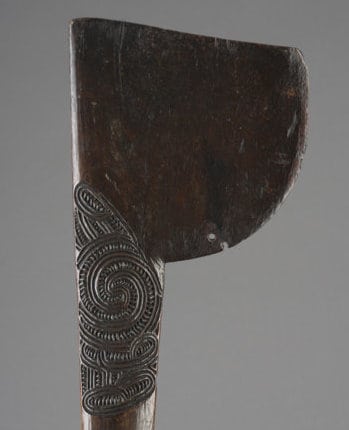

All images in this article are for educational purposes only.
This site may contain copyrighted material the use of which was not specified by the copyright owner.
Pouwhenua
This weapon resembled a Taiaha in appearance but lacked the arero or tongue. The blade is larger and heavier than a taiaha. It was about the same length and the other end was sharp and used as a stabbing spear.
They are considerably rarer than taiaha
KoiKoi
These weapons were primarily employed to strike and parry with a two-handed grip, rather then lunging forward using the point alone. They are often described as double-ended spears but were not thrown.
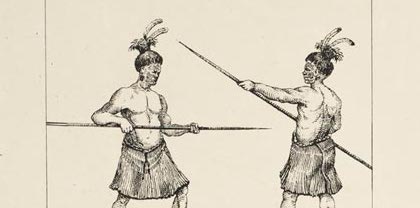
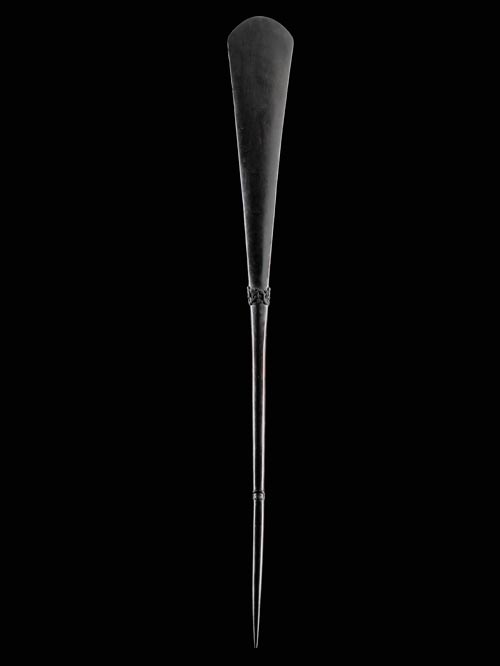

Ko
This Maori spade which was for planting kumara was sometimes used as a weapon. It has a sharp point at the lower end and hence would make an effective thrusting weapon. Not a weapon taken to battle but a weapon used if ambushed in the gardens.
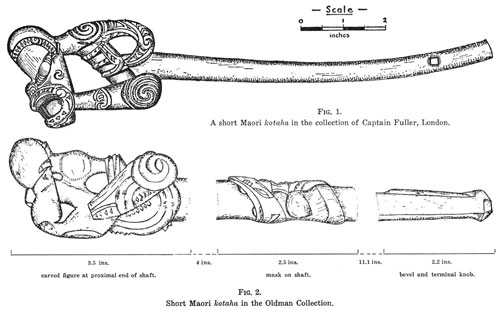
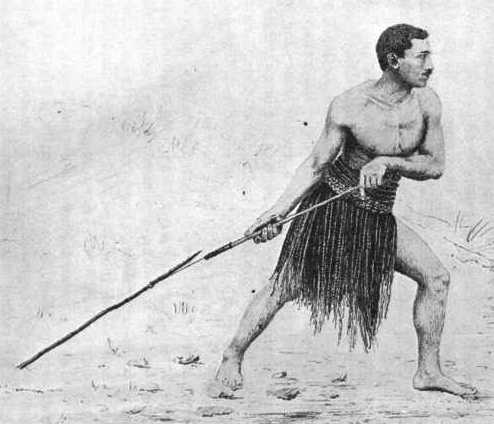
Kotaha and Tarerarera
This is the only form of native weapon used by the Maori that could propell any distance. It was a rough undressed spear, and propelled by means of a whip. It is sometimes termed pere by the old men, and also kopere
When used with the whip (kotaha), the butt of the spear Tarerarera was stuck in the ground. The head raised at the desired angle, and facing the direction of the enemy. The operator, holding the wooden whip handle, to the end of which a cord loosely hitched the free end of the cord round the body of the spear. By a vigorous swing of the whip, the spear flew from the earth and impelled swiftly in the direction of the enemy.
The twist of the cord round the spear withstood the forward ‘pluck,’ but released by the forward revolving movement of the spear. The operator would retain the whip in his hands. On striking the head of the spear to break off at a ring notch. The head of the spear would remain buried in the body, causing a wound from which recovery was extremely doubtful.
It was the only truely projectile weapon used by the maori
They are rare and collectable.
Reti
Maori Hoeroa
This peculiar weapon made from the rib of the sperm whale and was about five feet in length, flat and about two inches wide. It was not straight but curved. One end sharpened but not brought to a point. The full width of the weapon carried right through to the end, which, however, tapers to fine edge.
The hoeroa was both a missile weapon, a stabbing spear, also possibly as a striking weapon. A cord (taura) secured to a hole in the butt end of the hoeroa, the other end of the cord fastened to the girdle of the warrior. This enabled him to recover his weapon when cast.
As a stabbing or thrusting weapon it would inflict a dreadful wound. Propelled with an underhand cast it was a most difficult weapon to parry.
Often used defending a Pa Fortified Village
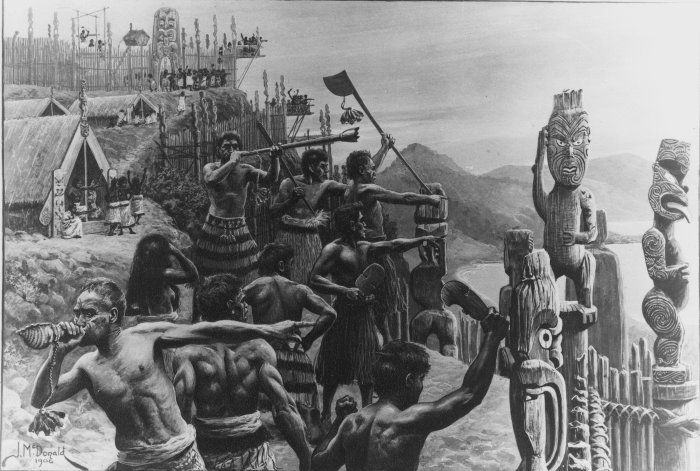

Thrusting or Stabbing Maori Weapons
Puraka
This weapon resembled an enlarged eel spear. The shaft made of manuka wood, resembled a large fork, and used for stabbing purposes.
Huata
This is the longest fighting spear of Maori. It was from eighteen to twenty-five feet in length and was much used in the defense and attack of the old Maori forts (pa). One man would insert his spear between the palisades of the defense, using the horizontal rail (huahua) of the palisading as a rest (pae) for same. In fighting outside it took two men to manipulate the somewhat cumbrous Huata. One towards the forward end of the spear, who acted as a pae, or rest, by loosely holding the spear, the other man at the butt end doing the thrusting. When fighting in the open, the users would remain behind the front ranks, who used shorter weapons. The long weapon being thrust forward between the men in front, as a man using it could not well defend himself.
In attacking a village, these spears were for slaying persons within their houses, by thrusting the spears through the roof of thatch or bark.
Tokotoko
This is often termed the ‘short Huata’ by natives. The Tokotoko pointed at one end, the point hardened by fire. Made of Manuka wood and was about ten to twelve feet long.
Tete
This was a different type of spear. It was a short stabbing spear, about seven feet in length. The shaft being of manuka wood, with a sharpened head of human or whalebone. It was often ornamented with a bunch of awe or dog’s hair fastened on by the lashing of the head.
Maori Weapons extra information
In war, the general rule was that each warrior carried one long weapon and one short weapon. The Long weapon in the right hand, the short stuck in the girdle. A Maori warrior would never hold his weapon in his left hand. The reason is that the left side is the tama-wahine, the female side, the side of death, of sickness or affliction, of weakness. Weapons are the most common Maori Artifact
In war, cooked food should not pass over a weapon or come in contact with it. If it does that weapon will lose all its virtue or piercing power. Weapons were spiritually empowered objects not just wood or stone.
Warriors fighting with a short weapon, relied principally on the nimbleness of their legs to avoid blows aimed at them. They were never still during such a combat, but always dodging and jumping about. The left arm was for parrying a blow. They did not have shields but used a puapua, a garment rolled or tied up into a ball, or wrapped around the arm.
If you found this article interesting you may also like Native war clubs of Fiji and South sea island war clubs
Most of the information for this article was extracted from
NOTES ON THE ART OF WAR, AS CONDUCTED BY THE MAORI OF NEW ZEALAND, WITH ACCOUNTS OF VARIOUS CUSTOMS, RITES, SUPERSTITIONS, &c., PERTAINING TO WAR, AS PRACTISED AND BELIEVED IN BY THE ANCIENT MAORI.
Other Articles in this series on Native Weapons include Aboriginal Weapons, Aboriginal shields and Tribal Shields of New Guinea

